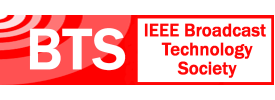- About
- Members
- Sponsors
- Subcommittees
- Technical Documents
- News
- Events
- Spotlight ATSC 3.0
- Contact Us
- Member Login
- Member Meetings
- Advanced Search
Search Site
Member Links
- About
- Members
- Sponsors
- Subcommittees
- Technical Documents
- News
- Events
- Spotlight ATSC 3.0
- Contact Us
- Member Login
- Member Meetings
- Advanced Search
Term
stream data
Posted on April 1, 2015 in
A stream is a data object which has no specific start or end. The decoding system may need only a small fraction of the total data to activate a given application. An example includes stock ticker services.
stream
Posted on April 1, 2015 in
An ordered series of bytes. The usual context for the term stream is the series of bytes extracted from transport stream packet payloads that have a common unique PID value (e.g., video PES packets or program map table sections).
still picture
Posted on April 1, 2015 in
A coded still picture consists of a video sequence containing exactly one coded picture which is intra-coded. This picture has an associated PTS and the presentation time of succeeding pictures, if any, is later than that of the still picture by at least two picture periods.
STD input buffer
Posted on April 1, 2015 in
A first-in, first-out buffer at the input of a system target decoder for storage of compressed data from elementary streams before decoding.
starting group number
Posted on April 1, 2015 in
The Group Number assigned to the first Group in a Parade, which determines placement of the Parade into a particular series of M/H Slots.
start codes
Posted on April 1, 2015 in
32-bit codes embedded in the coded bit stream that are unique. They are used for several purposes including identifying some of the layers in the coding syntax. Start codes consist of a 24-bit prefix (0x000001) and an 8-bit stream_id.
standard facility
Posted on April 1, 2015 in
A facility defined by the DASE Standard.
standard definition television (SDTV)
Posted on April 1, 2015 in
This term is used to signify a digital television system in which the quality is approximately equivalent to that of NTSC. This equivalent quality may be achieved from pictures sourced at the 4:2:2 level of ITU-R Recommendation 601 and subjected to processing as part of the bit rate compression. The results should be such that […]
splicing
Posted on April 1, 2015 in
The concatenation performed on the system level or two different elementary streams. It is understood that the resulting stream must conform totally to the Digital Television Standard.
spectral envelope
Posted on April 1, 2015 in
A spectral estimate consisting of the set of exponents obtained by decoding the encoded exponents. Similar (but not identical) to the original set of exponents.
News Categories
News Archives
Subscribe
Subscribe to The Standard, our monthly newsletter. Learn More
Join ATSC
ATSC is a membership organization with both voting and observer categories. Voting members include corporations, nonprofit organizations, and government entities, and they participate actively in the work of ATSC. Observers are individuals or entities not eligible to be a voting member.
Subscribe to our Newsletter
Subscribe to The Standard, our monthly newsletter, to stay up-to-date with ATSC news and events around the world.
Site Links
Contact Us
Advanced Television Systems Committee, Inc.
1300 I Street NW, Suite 400E
Washington, DC 20005
Do you have questions about ATSC?
About ATSC
The Advanced Television Systems Committee, Inc., is an international, non-profit organization developing voluntary standards and recommended practices for digital terrestrial broadcasting. ATSC member organizations represent the broadcast, broadcast equipment, motion picture, consumer electronics, computer, cable, satellite, and semiconductor industries. ATSC also develops digital terrestrial broadcasting implementation strategies and supports educational activities on ATSC standards.
© 2025 ATSC




































